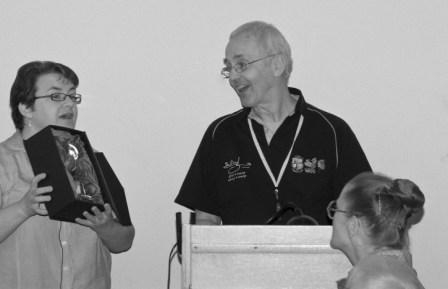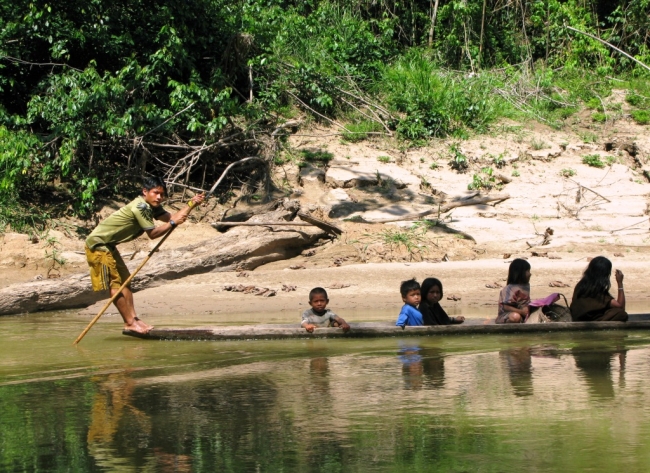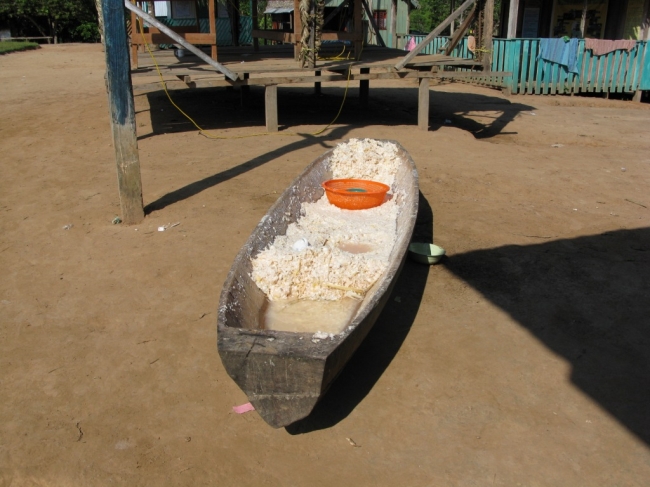In sad echoes of how long time GT member Martin Wright met his untimely & tragic death in mid 2007, renowned round the world cyclist Ian Hibell perished in awful circumstance. I understand how accidents happen but how does any driver not see a fully laden cyclist and then drive off when something does go wrong !! It beggars beliefÂ…
The following article was printed in the Daily Mail newspaper on 4 September 2008
The Ant
 A British ‘Marco Polo’ who travelled the world on his bicycle for 40 years has been killed in a hit-and-run road crash in Greece. Ian Hibell, 74, was dubbed a “cyclist extraordinaire” in the long-distance touring world and rode across every continent and some of the most remote parts of the planet. He undertook countless expeditions over 40 years that were classed as ‘world firsts’ including an overland Trans-Americas expedition from Cape Horn to Alaska, between 1971 and 1973. During his 250,000 miles of cycling across deserts and glaciers he was shot at by bandits, nearly eaten alive by tropical ants, stuck in mangrove swamps, chased by rogue elephants and once faced down a hungry lion. He enjoyed the hospitality of an Eskimo princess, a Dyak headman in Borneo, African chiefs and missionaries and once asked for a two-year sabbatical from work – only to return ten years later.
A British ‘Marco Polo’ who travelled the world on his bicycle for 40 years has been killed in a hit-and-run road crash in Greece. Ian Hibell, 74, was dubbed a “cyclist extraordinaire” in the long-distance touring world and rode across every continent and some of the most remote parts of the planet. He undertook countless expeditions over 40 years that were classed as ‘world firsts’ including an overland Trans-Americas expedition from Cape Horn to Alaska, between 1971 and 1973. During his 250,000 miles of cycling across deserts and glaciers he was shot at by bandits, nearly eaten alive by tropical ants, stuck in mangrove swamps, chased by rogue elephants and once faced down a hungry lion. He enjoyed the hospitality of an Eskimo princess, a Dyak headman in Borneo, African chiefs and missionaries and once asked for a two-year sabbatical from work – only to return ten years later.
Ian used over 800 cycle repair kits during his travels and refused to use standard pannier racks for carrying items – insisting instead that custom-made racks be welded onto his Argos bike frames. Ian, of Brixham, Devon, wrote numerous books about cycling and was also a regular on television shows such as BBC’s Blue Peter where he regaled generations of children with his tales from the saddle. He once estimated that he cycled an average 6,000 miles a year for 40 years – the equivalent of cycling to the moon.
But he died while cycling on the Athens-Salonika highway on August 23 after he was in collision with a car which was racing another vehicle. The driver fled the scene but eyewitnesses took its registration and he was arrested two hours later and is facing charges of causing death by dangerous driving. Friend Nicola Henderson said: “He died after he was involved in a hit and run incident whilst cycling in Greece. “ At the time he was doing what was his life-long passion of cycle-touring. He had been touring the world more or less continuously for over 40 years.
Ian began his journeys in 1963 when he asked for a two-year break from his job at Standard Telephones and Cables in Paignton, Devon. But he went on to the circle the globe for ten years and returned in 1973 with a “murmured apology” for his bosses. His journeys included the only non-motorised crossing of Colombia’s Atrato swamp and Panama’s notoriously marsh ridden Darien Gap. He once rode from Antarctica to the Amazon and from Alaska to Indonesia and in 1984 wrote a book about his voyages called ‘In Remote Places’. But despite his travels Ian often complained the most dangerous stretch of road in the world was between ‘Windy Corner’ and the ‘old Nortel site’ in Brixham.
Friend Nicola described him as a “world famous” rugged terrain cyclist, adventurer, photojournalist and lecturer who inspired bikers around the world. She said: “He gained a taste for travelling during his RAF service in the 1950s. He has pushed, dragged or carried his bike from the fringes of the Antarctica to the jungles of the Amazon, from the Arctic to the remoter islands of Indonesia.”
Ian, a bachelor, died at the scene of the crash and arrangements are underway for his body to be flown back to the UK for a family funeral in South Gloucestershire.
Speaking about his passion in 2005, Ian said: “Every so often a bird gets up and flies some place that it’s drawn to “I don’t suppose it could tell you why, but it does it anyway.” Tributes were today being paid to him on various websites. One – from his nephew – said: “He was a cycle tourist extraordinaire. I grew up hearing the tales from his latest trips to countries I had never heard of. “I always looked forward to seeing him so I could hear his latest adventures from escaping from armies of soldier ants as they ate his tent, to encounters with exotic tribes that had never seen a white man before, much less one on a bicycle. “He was an extraordinary man, and will be sadly missed by us, as I am sure he will by others in the cycling fraternity.”
Ian was honoured by the League of American Wheelmen and by the UK’s Cyclists Touring Club for his ‘trail-blazing’ tenacity. In the 1990s he was also invited to address Yale University and subsequently lectured on both sides of the Atlantic.

 Regular contributor Mac ruminates on the world of travel & some of his adventures along the way J This time round it’s passing onÂÂ “Six Good Backpacking Habits” as highlighted by Steve Gillman:-
Regular contributor Mac ruminates on the world of travel & some of his adventures along the way J This time round it’s passing onÂÂ “Six Good Backpacking Habits” as highlighted by Steve Gillman:- 

 Picture courtesy of The Ant: boating the traditional way, up the Rio Amônia past Apiwxta
Picture courtesy of The Ant: boating the traditional way, up the Rio Amônia past Apiwxta Picture courtesy of The Ant: Tome boat at Sawawo…the morning after!!!
Picture courtesy of The Ant: Tome boat at SawawoÂ…the morning after!!!